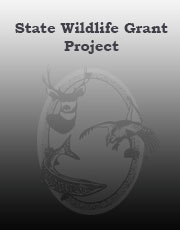
Grassland Bird Response to Decreases in Grazing Pressure (SWG T-31-R)
The North Dakota Comprehensive Wildlife Conservation Strategy (Hagen et al. 2005) and The Nature Conservancy (Sheyenne River Conservation Action Plan) both identify improper grazing practices as a threat to the tallgrass prairie in the Sheyenne River Delta. The goal of this project was to provide information about how to reduce the threat of improper grazing practices by examining the impacts of reduced grazing pressure on TNC properties in the landscape. Reduced grazing pressure should provide more habitat heterogeneity in the overall landscape, and increase the availability of high quality prairie for grassland breeding birds, such as Upland Sandpipers, Grasshopper Sparrows, Nelson’s Sparrows, Sedge Wren, Dickcissel, and Bobolink. The goal was to gain information about grassland bird response to grazing that could leverage changes in grazing practices on other agency and private lands.
Objectives:
- Conduct grassland bird surveys across TNC’s ~2,000 acres of grassland in the Sheyenne River Delta, with replication across areas with traditional and recently reduced grazing pressure.
- Determine whether a reduction in grazing pressure increases the abundance of grassland breeding birds.
- Determine whether a reduction in grazing pressure changes the composition of the grassland breeding bird community.
- Conduct vegetation sampling using belt transects, structural measurements and biomass clippings.
- Evaluate the change in range condition (biomass productivity and invasive species) after grazing pressure is reduced.

